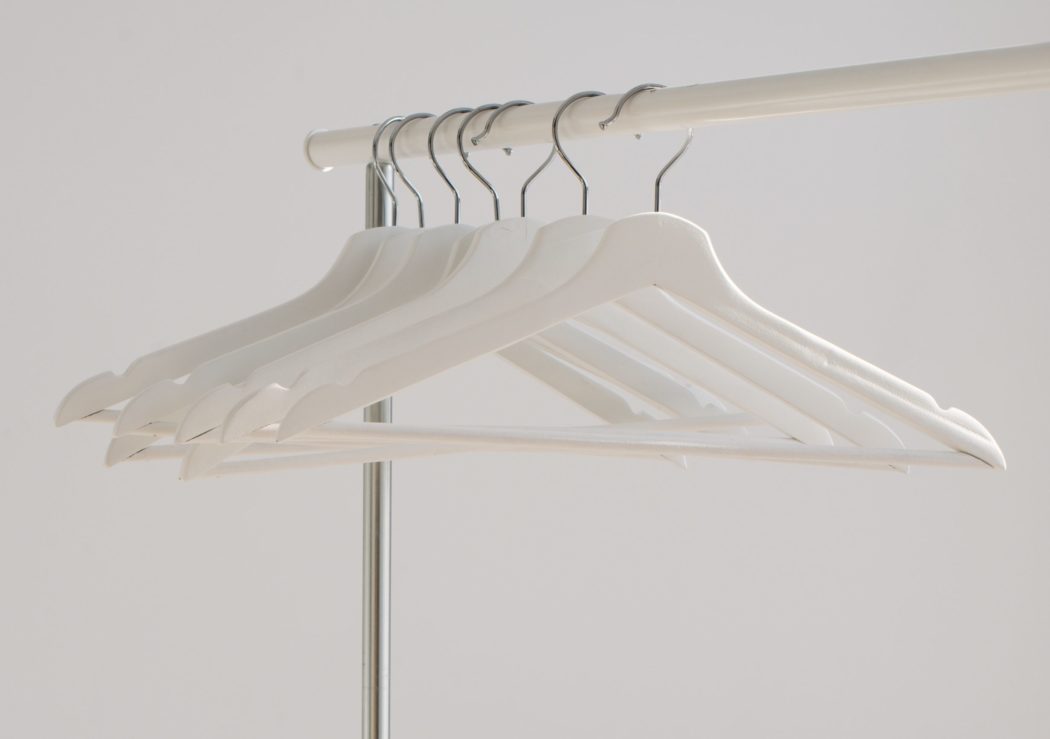The categories of the KonMari Method™ are arranged in ascending order of difficulty: 1) Clothing, 2) Books, 3) Papers, 4) Komono (miscellaneous items), 5) Mementos. You want to start with the easiest category first so that you don’t get discouraged right at the beginning. This presents an argument in and of itself why you should stick to the prescribed order. But if you want to understand the order of the KonMari categories even more, this post is for you.
Download your FREE KonMari Category Checklist incl. a summary of the method’s core principles to get started tidying on your own!
All of the presented 5 reasons are interwoven, as you’ll see. After reading them you should be able to fully understand the reasoning behind the KonMari category order.
1) Clothing = Daily Decisions
As already mentioned, the order of categories range from the easiest category progressing to more difficult ones. Clothing, the first category, is the easiest and Mementos, the last category, is the most difficult one. You’re used to making decisions about clothing every single day because you have to get dressed daily. Not (necessarily) so with items from the other categories. This is one of the main reasons why clothing is regarded as the easiest category to start with.
2) From Defined To Less Defined
Another reason why you want to stick to the category order is that they range from very defined to less defined categories. In terms of clothing, it’s pretty obvious what you consider clothing. Also, clothing is typically stored in closets or dressers or the like. Again, another denominator for definition. When you move along to books, those are pretty defined as well, although you might not necessarily store them all together (think about cookbooks in the kitchen, study books on your desk etc.). And it gets less defined as you move along to next categories. Especially Komono proves difficult in that sense and lines often tend to be blurry and need to be defined as you go.
3) Practice
The reason why you want to move from easier to more difficult categories is that you want to practice your sense of joy and really hone your ability to make those decisions. The more you practice, the more comfortable you get with making decisions and figuring out what the things are you want to surround yourself with. It’s almost a self-discovery process. And as you practice, again, you want to start off with the easier categories so that you get more experience and get more comfortable with the whole process as you move along.
4) Collecting Mementos Throughout
You often find sentimental items as you work on other categories. There might be photos tucked between book pages or a cardigan from your grandma in your closet you don’t wear but solely keep for sentimental reasons. These are all examples of Mementos that belong to the very last category. Thus, it makes sense to leave this category to the very last. Also, mementos are generally the hardest because you likely have your strongest and most emotions attached to items that belong to that very category.
5) Proven Method
Lastly, the KonMari Method™ is a proven method – practiced and researched by Marie Kondo in countless homes over many, many years. She reports that none of her clients have relapsed after completing the method. That means that it is effective and has worked for a lot of people.
Have you tried tidying according to the KonMari Method™? If yes, did you stick to the category and why or why not?
PIN IT:



